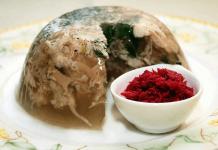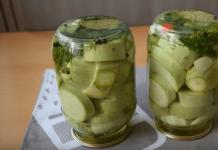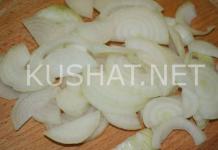One of the few berries to which practically no one is indifferent. Many people strive to plant a bush on their site. But it’s not enough just to care for it, you need to know how to plant it correctly, prepare the soil and grow a full-fledged plant from a cutting.
Such knowledge is necessary when a favorite vine becomes ill or when a bush is severely frozen. In such a case, you can take a seedling from a dying variety and use a cutting to grow a new bush of the variety you like.
In order for grape seedlings to start growing well in the planted area and develop fruitfully, it is necessary to choose the optimal area for rooting. The grapes never refuse the bright, baking sun and abundant heat.
It is advisable to choose a place so that the bush is on the south side, in a well-lit area, but behind a protective wall or fence from drafts and winds.
Preparing the landing area (school). It starts in mid-spring. In April, on warm days, you should dig the soil 40 cm deep. Dig a hole in the designated location to place the cutting. It should be at least 80 cm in depth (preferably 1 m), and in diameter - from 60 cm. It is recommended to divide the dug soil into 2 equal parts - upper and lower soil.
Crushed stone is laid out at the bottom of the prepared planting hole, in a layer of 12-15 cm. It must be carefully leveled and compacted tightly. The necessary point is the pipe, which is mounted on the southwestern side of the recess. The length of the device should not be less than 1 m, and the diameter should not exceed 0.5 cm (a small hose or tube will do). This design is necessary to saturate the roots deep with nutritious moisture.
- Humus
- Sand (coarse)
- Gravel
- Wood ash
Each of the components is taken in equally equal proportions and quantities. In addition, mineral fertilizers (superphosphate and potassium sulfate) must be added to the substrate. The soil mixture is mixed first, and fertilizing is added last. First of all, fertile prepared soil is laid at the bottom of the pit. This part should be exactly half of the excavated recess. In the second half, the remaining part of ordinary garden soil is filled. In this condition, the prepared area awaits spring planting. Preparations are carried out approximately 1.5 months before the planned planting work.

Preparation of cuttings begins long before planting - in the autumn. They are cut from those grape varieties that they want to propagate. Harvesting is carried out at the time of pruning the bushes in late September - early October, using a sharp, clean pruner or knife. It is recommended to choose those cuttings that have already bear fruit once. Such shoots can be either green or already woody. Such seedlings significantly increase the yield of young shrubs.
The size of the selected vine should be from 1 cm in diameter, and in length - it must accommodate from 4 to 8 healthy buds. After pruning the vine, all tendrils, shoots, unripe tops and leaves are removed. For the moment of wintering the cuttings, a special preparation procedure is highlighted:
- Label or label prepared grape samples.
- Soak them for 24 hours, thoroughly saturating the shoots with moisture.
- Place the seedlings for 30 minutes for disinfection in a solution of either potassium permanganate or iron sulfate.
- Blot the stems with a soft, moisture-absorbing cloth or paper towel.
- Spread them out spaciously and dry them thoroughly.
The next step is aimed at preserving the shoots during storage - they need to be dipped in both the bottom and top layers in melted paraffin and wrapped in a damp cloth, wrapping the whole thing in polyethylene. Paraffin is necessary not only to prevent pests from entering the vine during winter, but also to preserve moisture inside the shoot.
It is advisable to store the prepared material for planting either on the balcony or in the basement on the bottom shelf, the one closest to the ground, or in a dry cellar or in a refrigerator specially designated for such purposes. The optimal temperature for preserving future bushes is 0+2 C.
The main thing is to periodically look into the packaged seedlings and check their condition.
In case of damage to the cuttings or part of them (drying out, mold or rotting), it is necessary to remove the damaged area with a clean, sharp instrument and re-carry out moistening, disinfection and drying measures. Then send it back to storage. The vine should remain in this state until spring, then it is taken out for planting.
Thus, by performing simple manipulations it is possible to grow any varieties. The main thing is that this is the time of winter, when any negative conditions - high humidity, high sub-zero temperatures - can affect the safety of seedlings.
Rooting cuttings: terms and rules

Ready-made seedlings are planted in open ground when the temperature outside is +10+12 C and the ground begins to gradually warm up. This moment occurs approximately at the end of April - beginning of May. To make the soil warm up faster, either wrap it in film or pour out hot water.
Before planting, you should prepare the sprout:
- The first step is to refresh the pruning - use a sharp pruning shears to cut off a small area above the autumn cuts at both ends.
- Place the vine completely in water for 1-2 days.
- To protect against it, it is now necessary to treat only the upper edge of the shoot with hot paraffin or cover it with garden varnish.
- The lower end is placed in a solution with a root growth stimulator (Heteroauxin, Kornevin).
Now you have two options: plant it in a plastic bottle or place it in water:
- If the choice fell on the first option, then holes are made in the bottle in the lower part, and the upper part is cut off. A small layer of drainage (expanded clay, broken brick) is poured onto the bottom. It is covered on top with a thin layer of garden soil prepared in advance. Next the seedling is installed. It is imperative to adjust the slope of the planting - the sprout should be placed at an angle so that the upper bud of the vine is level with the upper cut of the container. It is not soil that is poured into the bottle, but pre-steamed old sawdust. The structure is covered with a plastic cup on top, thereby reproducing greenhouse conditions. The flowerpot is placed in a sunny, warm place. Watering is carried out only through the pan. The cup should be removed only when the growing leaves can no longer fit into the space allotted to them. The optimal temperature for germination is +23+25 C.
- The second planting method involves placing the seedling in a jar of water, which should be periodically added as it evaporates. The cutting is placed so that the lower cut is covered by 3-4 cm with liquid. After 2-3 weeks, the process of swelling of the bud will begin, and on the 20th day after being placed in water, the first rudiments of roots will appear. Now you should place the sprout in a flowerpot, at the bottom of which drainage is poured, then the mixture for planting. The cutting is placed evenly in the container and covered with soil to the edges of the pot, but so that the growing bud is above the ground level. Early planting is necessary due to the fact that there is a possibility of breaking the grown young roots, and this takes a lot of energy from the plant. During the growth and rooting of young plants, it is recommended to harden off the young plants - remove the plastic cup and take it out into the fresh air.
Transshipment of rooted seedlings is carried out no earlier than several full-fledged green leaves have formed on the cuttings. They are planted in prepared pits. Before transplanting, the plant is well moistened so that the soil comes out of the pot without effort. The lump with the seedling is carefully removed from the bottle and placed in the prepared planting site.
Cover the top with soil and water it. It is recommended to plant in the evening after sunset or on a cloudy day. Fruiting occurs as early as next year if the sprout is properly cared for.

The grape itself is a rather capricious plant, and its young seedlings especially require increased care and attention. After planting shoots in open ground, you should not abandon the shoot to independent existence:
- It is recommended to carefully monitor the moisture content of the substrate. Do not delay the drying out of the soil until cracks form. Moderate periodic watering is suitable for good growth and development.
- Don't forget to loosen the stem from time to time. This way, a large amount of air and moisture reaches the roots, and the soil is better nourished deeper into the soil. During irrigation, water does not roll off the soil, but deeply saturates the entire soil.
- In addition to loosening, it is necessary to uproot the emerging weeds. If the process is started, they will simply kill the young shoot, and this will slow down the development of the sprout.
- There is no need to fertilize the shoot yet, since both and were added at the time of soil preparation. Feeding will be needed only in the 2nd year of life.
- In subsequent months, you need to carefully monitor the condition of the bush. Carry out prevention against diseases and pests by spraying. Also perform seasonal pruning and cover for the winter if the variety is afraid of frost.
Thus, planting new grapes is not at all difficult; the main thing is to know the basic rules for preparing both the planting site and the seedlings, not only in spring, but also in winter. Self-grown grapes are the greatest reward for any gardener.
More information can be found in the video:
Grape cuttings stored in the fall can already be planted indoors or in a greenhouse. This improves and accelerates development. In a year or two, you can get your first harvest.
Preparing grape cuttings for planting
At the end of January or the first ten days of February, remove the branches from the shelter and wash them with a weak solution of potassium permanganate. For two days, they are kept in fresh water at room temperature, with the addition of a spoonful of honey for better rooting.
Then, the lower sections are refreshed with sharp pruning shears, 5-7 cm from the bud. The top is cut obliquely, 2-3 cm above the upper eye. It is recommended to make grooves from below with a sharp knife so that more roots are formed.
Container for cuttings
The optimal container is to cut a 1.5 liter PET bottle in half (crosswise). Line the bottom with foam rubber, pour a little melt water, so that 2-3 cm of twigs are submerged. The liquid will deteriorate less when adding a crushed tablet of activated carbon or a piece of wood.
The container should be wrapped in a plastic bag and placed on a well-lit windowsill. After three weeks, the bottom of the vine will be covered with a gray-white coating with dotted tubercles. You should not allow the roots to penetrate the foam rubber; they will break off. As soon as they reach 0.5 cm, the seedlings must be transplanted into the ground.
Substrate for cuttings
To prepare the substrate you will need: forest soil, well-rotted humus, peat and coarse sand, all in equal proportions. We fill the lower part of the cut PET bottle with the mixture, the bottom of which is equipped with drainage, it can be: broken brick, gravel, pieces of foam plastic, etc. Small holes must be pierced in the walls for air circulation.
Watering cuttings
In the future, it is important to prevent drying out. Grape cuttings don't like this. Therefore, it is necessary to periodically water it with water heated to +20 C. In May days, the strengthened reproductive material is transplanted to a permanent place. This should be done in cloudy weather or in the evening.
I wish everyone a good harvest and delicious grape wine made from our own grapes.
If you have something to add, please be sure to leave a comment.
The choice of place and date of planting, as well as the timing, has a significant impact on the rooting and growth of the grapevine, and can accelerate or delay the entry of the vine into the fruiting stage.
Grape cuttings with roots
Depending on the quality of the material obtained for planting, as well as on external factors, the most convenient and acceptable method of planting grape seedlings is chosen. One-year and two-year plants, cuttings, all have their advantages and disadvantages, and the yield of the future vineyard directly depends on how and when to plant the cuttings for seedlings.
Preparing cuttings for planting
In amateur viticulture, they use vegetative methods of propagating grapes and plant them from cuttings, because the seeds do not produce the characteristics of the mother variety. The best results are obtained by propagating grapes by layering, cuttings and grafting of woody stems. By growing seedlings from cuttings, winegrowers save a whole year.
The young vines will delight you with the first harvest in a year, and not, as they say in books, on the fourth!

Preparing cuttings for rooting
Grapes are a crop that is propagated by cuttings. Vegetative propagation is not a problem if you know its biological characteristics and when to prepare cuttings and how to properly prepare them for planting. Preparation for planting seedlings begins in the fall and consists of the following stages.
- Preparation of cuttings.
- Preparing for landing.
- Checking the condition of planting material.
- Preparation of landing containers.
- The soil.
- Paraffinization.
- Landing.
Woody cuttings in the nursery
Only woody shoots of the grapevine are suitable for planting by cuttings. From varieties resistant to frost, cuttings are taken in winter, in February or March, and from more sensitive ones - at the end of November. Each cutting must have a minimum diameter of 6 mm and at least two eyes, but it is better for shoot rooting to have 3-4 eyes, 2 internodes and a length of 25-30 cm.

Sorting cuttings before storage
When planting, you need to make sure that you accurately distinguish the upper part of the cutting from the lower one. For this purpose, make an oblique cut at the top of the vine, and at the bottom perpendicular to the stem of the cutting.
Make the upper cut at a distance of 1.5 cm above the upper eye, and make the lower cut directly below the node, without leaving a single millimeter of the internode. This is a very important point! The roots on the chubuk are formed thanks to the cambium - educational plant tissue, and on the grapevine there is enough of it only on the diaphragm of the node. Therefore, it is necessary to expose the diaphragm with the lower cut.

Correct cut above the bud
If the internodes are short, then the chibouks are cut into 4-6 eyes; the length of the cutting should be within 25-30 cm. When cutting the chibouks, be sure to blind the lower eye, and also use a knife or sector on the heel to make side cuts - furrowing. The operation promotes better rooting of cuttings.
The prepared seedlings need to be tied into bunches and sent to a cold basement for the winter.

Storage in the basement in sawdust
But before this, bunches of grape cuttings need to be soaked in water for 2-3 days. After soaking, treat with a growth regulator. This is a fairly effective way to quickly obtain roots. The following products turned out to be effective: heteroauxin, charkor, kornevit, furmar. Soak in rooting agents for 12-16 hours. The rooting solution should cover the cuttings by 2-3 cm. Some amateur gardeners use sodium humate and honey for this purpose.

Option - storing in bottles in the refrigerator
The cuttings should be rooted in damp sand, covering the lower tip of the plant with it. You can also bury them in the garden to a depth of 20-30 cm.
In winter, seedlings will require protection from freezing, so they are sprinkled with peat, dry sterile sand or sawdust.
In April, young vines need to be planted in beds. The soil surface should be cleared of weeds and fertilized with manure or compost in an amount of 4 kg per square meter (2 weeks before planting).
Young cuttings should be planted at a distance of 20 cm from each other and so that only the upper buds are above the ground.

Rooting cuttings in the ground
Vines take root very easily. Already in the fall of next year it will be possible to begin transplanting young individuals from a grape school or plastic bottles to a permanent place.
Young shoots are cut off above the second eye and covered with soil to reduce the risk of drying out. If small vines have not begun to produce leaves during the growing season, reduce them to 1-2 shoots and leave them in the same place throughout the next winter, protected from frost.
Woodification of cuttings at home
In areas where severe frosts do not allow seedlings to be left to take root in the garden for the winter, rooting is carried out at home, in one-liter containers or plastic water bottles.

Rooting cuttings in glasses
At the end of February, the cuttings are taken out of the basement and transplanted into individual containers. The soil for rapid rooting is prepared from humus mixed with acidified peat, dry sand and manure. The roots begin to actively develop at a temperature of 24-26 ° C. The pots are placed in a warm, well-lit room.
To avoid drying out, parts of plants protruding above the ground are protected with paraffin.
As soon as the buds begin to open and the first branches appear, the cuttings along with the soil are transplanted into the soil. A bowl-shaped depression is formed in the ground and a young rooted cutting is lowered to the bottom. The lower part is densely sprinkled with earth and gently pressed against the trunk with your fingers so that the seedling develops strong underground stems.

Soaking cuttings before planting
You can use the fastest way to root cuttings. The harvested vine branch is cut into short cuttings - 1 cm below the eye and 2 cm above the eye and dipped in warm water for 24 hours, and then planted in a shallow plate filled with sand and placed in a multiplier (temperature 25-30 ° C). Make sure that the substrate does not dry out.

Melt water is used for soaking
As soon as the seedlings begin to produce roots, transfer the seedlings to a well-lit room with a temperature of 20 ° C.
Keeling is an important rooting process
An interesting agro-industrial technique that promotes rooting and increasing the productivity of planting material is kilching.
By inhibiting bud development, the development of the root system is accelerated. After planting the cuttings in the ground, the buds quickly swell and bloom. This is achieved due to special temperature conditions (contrast between the cut ends).

Kilching cuttings in sawdust
After soaking in water and a growth regulator, place the bunches of cuttings in a cold greenhouse with the bottom up, ideally align the heel surface of the bunch. The cuttings must stand strictly vertically. Strengthen the bunches, press them together, and pour 5 mm thick black soil into the spaces between them, compact and moisten it. Cover with a greenhouse frame and plastic wrap.
Kilching of grape material is carried out in April, when the sun is already high and the greenhouse effect under the shelter is high, the temperature in the area of the heels of the chibouks is about 24-28 degrees.

Callus and roots on grape cuttings
Even though the nights are cold, the shelter conserves heat. Over the course of 3-4 weeks, there is an outflow of nutrients in the shanks to the heels. Callus is formed on them - wound tissue, from which roots subsequently grow.
And the eyes in the upper part of the chibouk are at rest, since the temperature in the depths of the greenhouse pit is much lower than at the surface, where the heels are located. The pickled cuttings are taken out from under the shelter before planting. After kilching, the cuttings are planted in a grape vine, and they take up water and nutrients with their own roots. In the school, vegetative eyes begin to develop, from which a shoot grows.

Rooting in water - green cambium visible
Seedlings prepared in this way take root well in the soil, even such capricious varieties as Saperavi, Festival and others. High productivity is achieved mainly due to its own root cuttings. Unlike pinching onto a rootstock, cuttings provide real and independent nutrition to young plants.
Propagation of grapevine plants by cuttings is most profitable not only in individual households, but also on an industrial scale.
This method of kilching is acceptable only if there are many cuttings - thousands. What if you only have a dozen of them? In this case, a home kilcher, designed as follows, is well suited.

Kornevin stimulates root formation
Cover the walls of the plywood box with polystyrene foam. An old wooden parcel box will also work, into which insert a bunch of petioles with the heels facing up. Fill the voids around the pipes with sealing material - perlite or sawdust from coniferous trees. Place a layer of black soil on the heels: it absorbs thermal energy well, and the lower part of the cuttings warms up well. The heat source is a light bulb, which is turned on and off using a thermal relay, the sensor of which is installed outside. The temperature in the soil layer should be between 18-22 degrees. This is most likely the most difficult and most expensive stage of the keeler. But if we are talking about especially valuable grape varieties, then the game is worth the candle. Such a keeler should be installed in the cellar: there is a consistently low temperature, which does not allow the development of eyes in the upper part of the chibouks.

Home cultivator - extracting seedlings
Grape cuttings can be rooted without kilching. Planting is done at the same time as potatoes, so that the temperature in the soil is approximately 10 degrees at a depth of 10 cm.
Reproduction in Chinese
The easiest way to propagate young grape bushes from early spring to late autumn is “Chinese”.
- One of the longest branches is selected from the mother branches and buried in the ground to a depth of 4-5 cm.
- During the growing season, the soil near it is loosened and weeds are removed.
- Soon young shoots will emerge from the ground.
- When all the leaves have fallen from the vine, the young shoots are cut off from the mother plant and divided into separate seedlings, which are transplanted to a permanent place.

Chinese method - rooting by layering
Clothespins - why?
In amateur viticulture, it is possible to pin a cutting from a valuable grapevine onto a less valuable rootstock. Use their green shoots as a substrate. Several cuttings of different varieties can be grafted onto one bush. Remember that properly done pinching increases the resistance of noble grapevines to diseases and pests.

Grafting grapes into an old standard
The most valuable grape varieties that are best propagated using clothespins:
White grape varieties
- Bianka is a medium-early variety, resistant to frost and fungal diseases;
- Isa is a dessert variety with medium-strong growth;
- Reforma is an early variety, resistant to frost and suitable for wine production;
- Refrain is a tall dessert variety, fertile;
- Himrod is one of the seedless varieties, grows very quickly and is resistant to frost.
Dark grapes
- Aldent is a late dessert variety, high-yielding, characterized by strong growth and resistance to frost;
- Alwood is a high-yielding late dessert variety. Resistant to pests, diseases and significant temperature changes;
- Cascade is an early ripening variety that is resistant to fungal diseases. It makes excellent wine;
- Schuyler is distinguished by his strong growth. Early ripening grapes, susceptible to powdery downy mildew;
- "Canadice" - Seedless dessert.

Rooting cuttings in sawdust
Clothespins on branches
In the fall, prepare cuttings from the vine varieties you want to propagate. Store them in a dry and cool cellar until spring. Then divide the stems into smaller fragments, so that each has at least one eye. After 2-4 hours, after soaking in the preparation Hinosol 0.5%, Fundazol 0.1% and Torsin 0.1%, place them in dry plastic bags, which are stored in the refrigerator at a temperature of 2-4 ° C.
Pinching is carried out from May 15 to June 10 - when the thickness of the branches is equal to the diameter of the tree stems.

Grafting on a branch in summer
Before pinching, it is necessary to soak the sections in soft water for 12 hours. Then trim them just before the lower buds. The lower parts are formed in the shape of an oblong wedge, and the upper sections are 1.5-2 cm above the bud.
Cut the branch to the first or second node on the leaf. Then cut the shoot lengthwise down the middle. Insert the cutting into the gap and wrap the grafting site with film, omitting only the top bud of the noble variety.
Choosing a place to plant cuttings seedlings
For growing grapes, gentle slopes on the south or southwest side are recommended; in the case of early ripening grape varieties, they can be planted in the southeast. Frosts and strong frosty winds from the north and northeast will not be so terrible for seedlings. The highest yields and delicious berries are obtained when the soil is warm and moist, but not swampy and clayey. The groundwater level should be maintained to 1.5 m below the soil surface.

Preparing a pit for grapes
Grapes also prefer soil with appropriate acidity, neutral pH (pH 6.5-7.5), while hybrids grow well on slightly acidic substrates (pH 5.5-6.0).
Boarding time
Vines with roots without soil are recommended to be planted in spring, at the end of April or beginning of May. Rooted cuttings can be purchased in pots. If they are still without leaves, then it is better to plant them in the ground along with a lump of earth in March or April.
When choosing a planting date, you need to consider the type of soil in your garden - on lighter soils, seedlings can be planted in the fall, and where the soil is wet and heavy, it is better to plant in the spring.
Purchasing seedlings
When purchasing plants in pots, you should choose only those in which the length of the main stem has already become woody completely (or half) and has reached a length of 70 cm. The diameter of the main stem at the base must be at least 5 mm, and half the length - 4 mm. Grape seedlings with these characteristics are very valuable; they take root well.

Grafted seedlings for sale
Preparing the site
The place for spring planting is prepared in the fall. It is necessary to thoroughly clean the soil of weeds, loosen it, and in case of high acidity, add lime (3 kg of CaO per 10 sq. meters). After two weeks, it is advisable to mix the soil with fertilizers: dry manure (8-10 kg / 10 m2) or compost (10-15 kg / 10 m2). Immediately before planting the cuttings in the spring, the soil must be loosened again.

The placement of the seedling should be deep
Planting depth and width
Young grapevine seedlings are planted at a distance of 1.0-1.5 x 2.0-3.0 m, at a distance of at least 70 cm from the fence or wall of the building. If several cuttings are planted, place them in a row along the north-south axis so that they all receive uniform lighting. The recommended hole depth is 20-40 cm, depending on the type of seedling and soil compaction. Deep planting promotes healthy grapes; they are less susceptible to drought and frost. Potted cuttings should be planted deeper than bare-rooted plants because they are just forming a root collar.

Shading the seedling will protect it from burns
For grafted samples, the clipping point should be above the soil surface.
Landing technique
Before planting the cutting in the ground, it must be soaked in a mud bath for ten hours. Dig a hole, pour coarse gravel into it to ensure drainage, and place a 2 m peg. Cut the main stem of the seedling to a height of 2-3 eyes. After filling 2/3 of the hole with soil, water each plant with 5-7 liters of water. Then add the rest of the soil and form a mound near the trunk up to the top cutting of the bud to protect the shortened growths from direct sunlight. The technique for planting cuttings from pots is similar, although the seedlings are not cut so ruthlessly (up to 2-3 cm above the ground).
There are several ways to propagate grapes. For example, by seeds - a very rare way to grow at home. By rooting cuttings available on the bush site - this method is not suitable for every variety and dacha plot. And the most common way is to grow grapes from cuttings. Many gardeners do not know how to grow grapes from cuttings correctly, so they prefer to propagate the required variety by planting expensive seedlings. However, you can successfully grow grapes at home using cuttings.

How to prepare cuttings
Cuttings or chibouks are prepared in the fall, from well-ripened, healthy shoots that have grown over the summer, which crackle when bent and have a uniform color. If the cuttings are undeveloped, poorly ripened, very thin, have any damage from pests or diseases, are cut from barren bushes or, conversely, are very thick and fattening, then they are not suitable for rooting and planting. At the end of October, when the foliage has completely fallen off the vine, before the first frost sets in, cuttings are cut for cultivation. Cuttings prepared before the start of sap flow in early spring are considered the best for rooting; they retain vitality and freshness well.

The cut vine is cleaned of tendrils and shoots and cut into cuttings 45-75 cm long. However, a vine 110-135 cm long is better preserved in the winter, and in the spring when cutting the stems it produces less waste. After this, the chibouks are collected into bunches according to the variety, marked with a label, wrapped in a tight bag and placed in a cool, dark place for winter storage. The cuttings are stored in basements, cellars or pits, which are prepared directly on the site. They are laid vertically or horizontally, densely sprinkled with wet sand, roasted sawdust or structural soil. Before laying, to protect the cuttings from mold, they are treated with a solution of 5% iron sulfate.
If, after pruning, the cuttings were left in the yard for a long time, before storing them they must be placed in warm water for 1.5-2 days. Before planting the chibouks, you should check them by carefully removing a little bark from the edge with a sharp knife. The wood should be bright green in color, and when the eye is cut crosswise, the bud inside should be dense and green. If the eyes inside are darkened brown, it means that the buds are dead and the stems are not suitable for germination.

Preparing for rooting
Before planting grapes from cuttings, you must first prepare containers for planting and a substrate, which is prepared from soil, sand, humus and sawdust, mixing everything in equal proportions. To ensure that the substrate is always loose and does not become compacted, it should be moistened periodically. To drain excess moisture, drainage is laid and several holes are made at the bottom. Cardboard juice or milk bags, plastic bottles with the top cut off, and cake boxes are also suitable as containers for rooting cuttings.
Using pruning shears, make cuts from the cuttings, the lower one - directly under the bud, the upper one - 2.5-3.5 cm above the bud. After this, furrows are made on the bark, that is, scratches are made from the middle to the bottom, using a sharp nail or a thick needle. Then the cuttings are placed completely in water for 1.5-2.5 days, depending on the degree of dryness. After which the cuttings are placed for several hours in a container with a root formation stimulator according to the instructions. And they are placed in jars with clean water in a sunny place according to the varieties. After 12-16 days, the upper bud should swell and the growth of a young shoot should begin. Keep the water at a level of 3.5-5 cm, adding more as it evaporates.
After 22-28 days, the first roots will appear. The appearance of the first roots is the main condition for planting cuttings in a previously prepared substrate.
A drainage layer of 2-4 cm is placed in the container, 5.5-7.5 cm of soil mixture is poured on top, the cutting is placed vertically and filled to the top, leaving a green young shoot above the substrate. Water the newly planted chubuk moderately and place it on the windowsill, on the sunny side. After a few days, you can fertilize with a small amount of potassium or wood ash. It is not recommended to apply nitrogenous fertilizers, as this can cause active premature growth of young shoots. The cuttings are regularly watered with a small amount of water. When it grows strongly, it is pinched. When the air temperature is 2-5C, the rooted cuttings are planted in open ground, carefully pulling them out of the container so as not to damage the roots. Until the grape cuttings have completely taken root, they should be darkened from direct sunlight.

Kilchevanie
You can pickle cuttings not only in hot and cold greenhouses, but also in boxes with sawdust or old buckets that are dug into the ground. There is also kilching in room conditions, using a special device with electrical heating. In practice, this procedure is usually performed according to the following scheme.
A hole is dug in the vineyard, the depth corresponding to the length of the chibouk. They are installed vertically with the ends down and covered ¾ of the way with soil. Then, cover the soil around with thick cardboard and add loosened soil to the soil level. A small bulk border 9-14 cm thick is made around the pit from a mixture of humus, straw, and manure to protect the soil from excessive heating by the sun's rays during the daytime.

After 23-26 days, the condition of the cuttings is checked. Why carefully rake the earth and inspect their cuts. If tubercles of future roots or brownish-white callus growths have formed on the heel node, stop cultivating. You should not allow the formation of excessively long roots, since when planting in a tree they will certainly be damaged or broken off.
Boarding at school
The area where grapes are grown from cuttings is called a shkolka. It should be in a well-lit and ventilated place. One of the main conditions for better rooting and development of seedlings is light, loose soil and a sufficient amount of fertilizer.
In the spring, in mid-April, the soil is prepared to plant the cuttings. They dig up the area to a depth of 35-40 cm and add 1.5-2.5 buckets of sand, 80-120 g of nitroammophoska, 0.5-1.5 buckets of humus per 1 sq. m. Then they dig up the area again, mixing the soil. Then they make small mounds from north to south into which the chibouks will be inserted. Before planting, the cuttings are soaked for 15-20 hours, cut with sharp pruning shears into 3-eyed ones, so that the lower cut is 0.4-0.7 cm below the lower eye, and the upper one is 0.7-1.4 cm above the upper one. . The upper cut is covered with paraffin with 2.5-4% bitumen to slow down the evaporation of moisture in it and prevent it from drying out.

The finished cuttings are planted in the ground and watered abundantly. The ground near the heel is covered with mulching material - black film, a piece of roofing felt or thick cellophane. You should regularly check the soil under the covering material, moistening it if necessary and not allowing it to dry out completely. With proper care, by autumn you can get healthy seedlings with a developed root system.
Care and planting in the ground
In the last weeks of May, when the air temperature rises to 10-15 C and the risk of spring frosts has passed, grape seedlings are planted in open ground. Seedlings are planted at a distance of 2.3-2.7 m from each other and 1.8-2 m between rows.
A denser planting pattern requires the formation of vertically growing bushes for the next season. Although this method of cultivation produces high fruiting, additional care and special efforts are required when covering the bush in winter.

To quickly form the required number of branches, it is better to plant 2-3 seedlings of the same variety in a planting hole. To stimulate the development of the root system and improve survival rate, it is necessary to cut the roots of the seedling before planting by 0.5-0.7 cm. At the bottom of the planting hole, a mound is poured in the center, a cutting is placed on it, spreading the roots in different directions, and covered with soil . The soil is compacted, watered and the seedling is covered with a cardboard cap so that it does not suffer from direct sunlight.
Video “Preparing cuttings and their rooting”
This video clearly shows how to prepare grape cuttings, how best to process them, where to store them, what conditions are necessary for successful rooting.
Grapes are an extremely healthy and at the same time very tasty berry, which can be grown anywhere in Russia. However, in order to get a healthy plant that produces a good harvest, you must have certain knowledge. So, let's look at how to do it correctly in the spring. Which planting method should you prefer?
Variety selection
When deciding which grapes to plant from cuttings, it is necessary to take into account the resistance of a particular variety to pests, diseases, and adverse weather conditions. It is best to give preference to those varieties that are famous for stable fruiting, good pollination and strong ovaries. So, when choosing grapes for planting, you should pay attention to varieties that bear juicy, sweet and large fruits: “Delight”, “Harold”, “Galbena Nou”, “Arcadia” and “Aladdin”, “Impulse”, “Gadahad”, “kishmish No. 342”, “nadezhda AZOS”, “kodryanka”, “friendship”, “timur”, “lora”.
Harvesting cuttings
Healthy cuttings of selected varieties should be prepared during spring pruning. The ends must be dipped in melted paraffin, wrapped in damp material and placed on a shelf as close to the ground as possible.
Cuttings should be taken out on the eve of spring. Determine where their top and bottom are and use a knife to cut off the lower part. It is important that the cut passes under the lower bud. Using an awl, make 3 longitudinal cuts between the two lower buds of the cutting. It is from the places of notches and the lower bud that the root system will develop.

Features of keeping cuttings in spring
Immerse the cuttings for three days in a container with a honey solution (2 tablespoons of honey per 2.5 liters of water). This will awaken them from hibernation. Next, plant the cuttings in plastic bottles, the soil in which should consist of soil, sawdust and humus, taken in equal quantities. During planting, it is necessary to ensure that the 2 lower buds are in the soil, and the other two are above it. Then you need to moisten and compact the mixture a little in the bottle and place the planted cuttings on a windowsill located on the sunny side.
Plants should be watered with settled water once every three days. After watering, the soil must be loosened. After a month, the buds will swell and leaves will appear. Soon the time will come to plant them in open ground.
Boarding time
Many inexperienced gardeners are interested in when to plant grapes from cuttings? The best time for planting is considered to be early spring. Moreover, the event should be carried out until the process of movement of juices begins in the plant.

Bulk beds or trenches?
The method in which grape cuttings are planted is of great importance and directly affects the yield of the crop. If you give priority to reliable protection of this heat-loving plant from winter frosts, you should prefer trenches or boxes. The pit method has undeniable advantages:
- the roots of the plant are located deep, and therefore they will not freeze in winter;
- It is much more convenient to cover the vines in trenches;
- In summer, watering grapes is more economical and convenient;
- In spring, the plant is not afraid of return frosts.
When grapes do not receive enough heat in the summer, it is worth choosing bulk ridges:
- in the spring, the roots begin to warm up earlier and throughout the season receive the amount of heat they need;
- the bushes are firmly protected from flooding;
- it’s much easier to fight weeds this way;
- The grapes are provided with excellent air conditions.
How to plant grapes by cuttings in the spring in areas where they lie quite deep, or in regions characterized by snowless winters? In this case, you should give preference to landing in a trench. In areas with insufficiently warm summers, stable snow cover, and also with close-lying groundwater, the best harvest can be obtained by growing grapes on ridges.
Landing in the pits
Before planting grapes by cuttings (in the spring), it is necessary to prepare the trench in advance, in the fall. It is recommended to place the ditches in the direction from north to south, in this case the sun will illuminate the plant quite well from all sides throughout the day. The width and depth of the ditches should average half a meter.

To fill the holes, you need to prepare a soil mixture. To do this, you should mix in equal quantities humus, the top layer of garden soil, gravel and also mineral fertilizers with potassium sulfate and superphosphate should be added to the mixture, and most of the fertilizer should be located in the lower part of the hole, which ensures the best nutrition of the roots.
When filling the trench, it is necessary to lightly compact it with your feet, and to complete the process, water the soil with a solution of potassium permanganate. The grapes will be sweeter and more aromatic if the bottom of the trench is lined with a layer of small stones or coarse sand, which provides better soil aeration.
When installing cuttings in planting holes, it is recommended to use pegs, thanks to which the plant will grow more evenly and will be easier to tie up. On sandy soils, the root system of the grapes should be buried by half a meter, while on clay soils - by 20 cm.

Proper planting of grapes involves sprinkling the roots of the plant with a soil mixture, the layer of which should be 10 cm. The top of the grapes should be covered with mulch, and then covered with a trench with film. Such conditions contribute to faster warming of the soil, as a result of which the shoots will develop well. You need to remove the film with the onset of warm days, while sprinkling the bushes with soil mixture.
Planting in ridges
When planting grapes in bulk beds, the roots of the plant gradually grow in depth and breadth, staying in favorable water, air and temperature conditions. Loose soil provides the best aeration of the roots, in which oxygen access occurs regardless of environmental factors. And on rainy days, the root system is well protected from waterlogging. As with creating a trench, beds require soil preparation. For this purpose, it is necessary to mix gravel-sand mass, humus and loam in equal proportions, add superphosphate, as well as potassium sulfate.
The most optimal width of the ridges is 1 meter and a height of 0.3 m. In order to provide the roots with good protection from frost, it is recommended to make the slopes gentle. At the same time, if the winter has little snow and is accompanied by severe frosts, then there is a high probability that the ground will freeze. In order to protect the roots of the plant from freezing, it is advisable to cover the slopes with corrugated cardboard.
Pieces of pipe should be installed in the mounds of earth, the diameter of which should be about 30 cm, this is necessary so that its watering brings maximum benefit to the plant. In order to improve the air regime of the soil, it is useful to strengthen the slopes with empty bottles, sticking their necks into the soil.
Caring for grapes in the spring after planting
Grapes are a capricious crop that requires special attention and care. You should start caring for the grapes immediately after planting them. So, what should be the care for grapes in the spring?

Since a sufficient amount of fertilizer was added to the soil when planting the bushes, there is no need for additional fertilizing during this period. The main thing is to monitor the condition of the soil and not allow it to dry out, for which it is recommended to regularly water this berry crop. Caring for grapes in the spring also involves loosening the soil and destroying the weeds present on it. That, perhaps, is all that the concept of spring grape care in the first months of its life includes.
Prevention of plant pests, protection from diseases, pruning, shelter for the winter - this is only a small part of what a novice gardener who decides to grow grapes will have to face. However, all these activities are carried out in the subsequent months of the plant’s life.
If you clearly know how to plant grape cuttings in the spring, and even provide the plant with the required care, then you can safely count on the fact that soon you will certainly enjoy the tasty and healthy fruits of this crop.


























